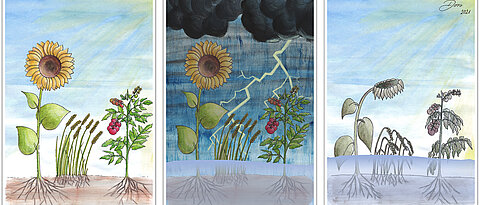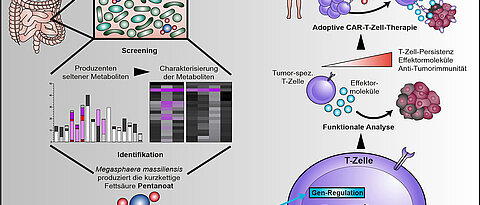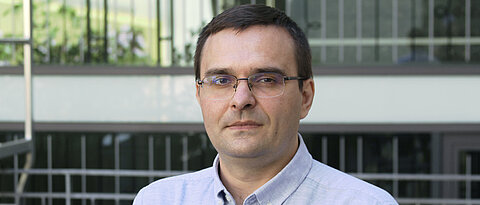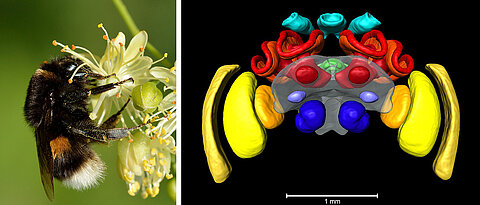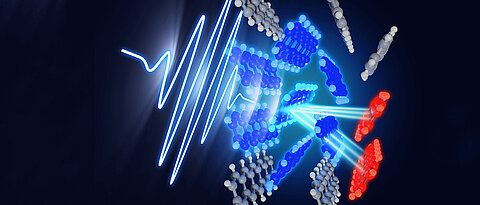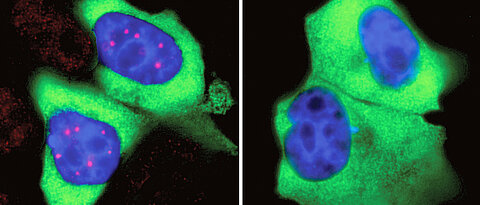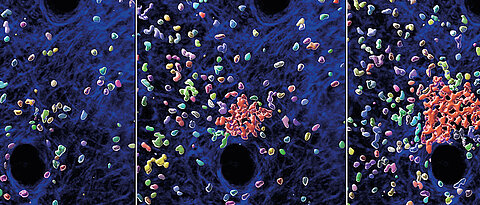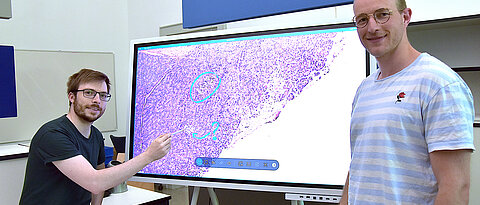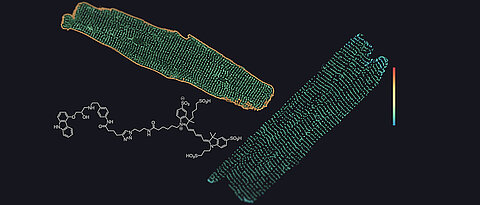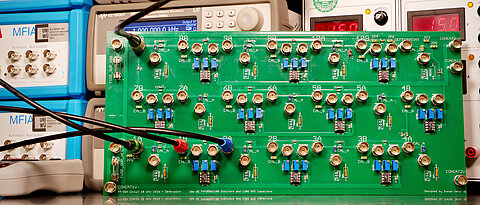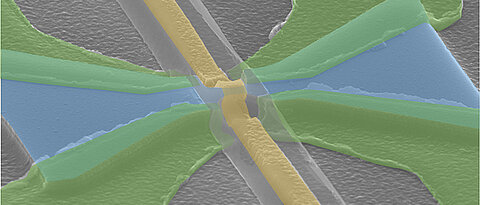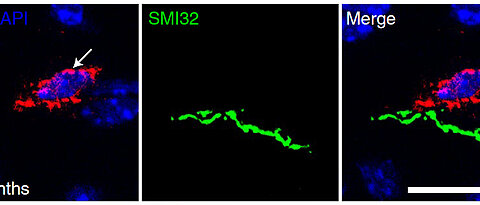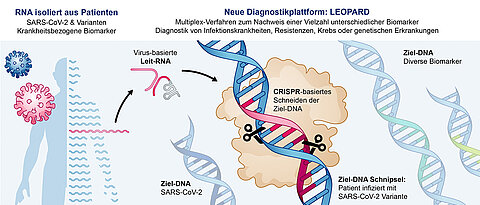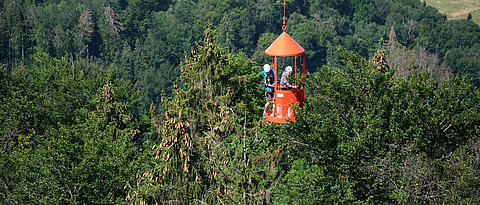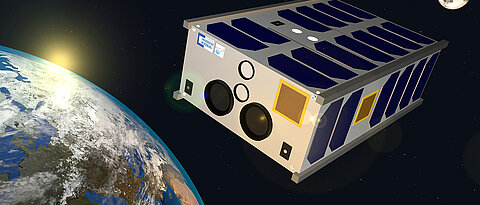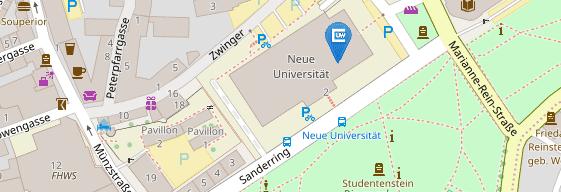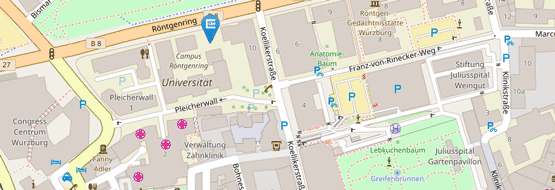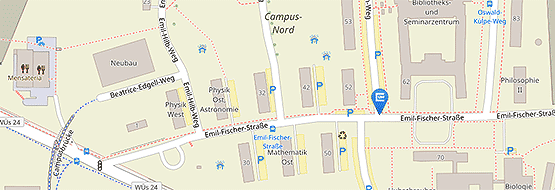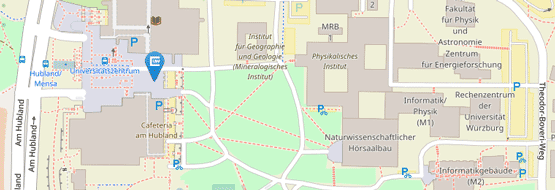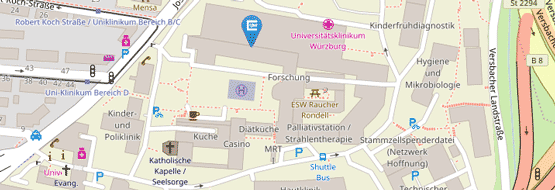Picture credits
Find your match among 280 degree programmes! | Image: Jonas Blank / Universität Würzburg
When plants are flooded for a long time, they suffer damage. Würzburg researchers are investigating what happens in plant cells during flooding. | Image: Dorothea Graus / Universität Würzburg
The bacterium Megasphaera massiliensis produces the short-chain fatty acid pentanoate in the human digestive tract. It is capable of altering certain cells of the immune system so that they can fight tumours more effectively. This also applies to CAR-T cells. | Image: Maik Luu
Dr Radu Timofte | Image: Carlos Eduardo Porto de Oliveira
A buff-tailed bumblebee and a 3D model of the bumblebee brain, based on micro-CT. The blue regions symbolise the primary olfactory centres. The yellow/orange regions process visual information from the compound eyes, the turquoise coloured visual information from the ocelli. Shown in red/orange are the mushroom bodies important for learning. The insects' inner compass, the central complex, is green. | Image: Erdhummel von Ivar Leidus / Wikimedia Commons CC BY-SA 4.0 / 3D-Modell von Lisa Rother / Universität Würzburg
In the singlet exciton fission process, a singlet exciton (blue) is created upon absorbing light and then splits into two triplets (red) on ultrafast timescales. The team tracked real-time molecular motions acompanying this process in pentacene. | Image: Jörg Harms, MPSD
SMN is concentrated in the Cajal bodies (left, red) in the nucleus of human cells (blue). If phosphorylation of SMN is inhibited, the concentration ceases and Cajal bodies disappear. | Image: AG Prof. Gruß / Universität Bonn
Individual neutrophils attract more cells to initiate the formation of a neutrophil swarm and cluster in living mouse tissue. Snapshots of a 30 minutes time sequence are shown. Individual neutrophils (multicolored), neutrophil clusters (red) and structural components of the mouse skin (blue) are displayed. | Image: MPI für Immunbiologie und Epigenetik, Tim Lämmermann
Philipp Sodmann (left) and Matthias Griebel developed a deep learning model that can evaluate microscopic images. | Image: Universität Würzburg
Beta1- and beta2-adrenergic receptors in heart muscle cells: In the left cell, beta1 receptors are labeled – they are found both on the cell surface (yellow) and in the T-tubules (green). In the right cell, the beta2-receptors are labeled – they appear only in the T-tubules (green), but not on the cell surface (which is therefore not visible in the image). | Image: Marc Bathe-Peters & Horst-Holger Boltz
The image shows a "topolectric circuit" used to realize the topological states studied here | Image: Lukas Ziegler
Researchers from Jülich and Würzburg are jointly investigating new, exotic quantum states that form at interfaces between superconductors and topological materials. The image shows a quantum dot contact structure constructed at JMU from the topological insulator mercury telluride (blue), which is contacted with superconducting electrodes (green). An electrostatic gate (yellow) is used to control current conduction across the junction. Similar structures will be used in the future to investigate fundamental properties of topological qubits. | Image: Johannes Baumann / Universität Würzburg
Microscopic picture of a CD8+ T cell in the CNS of a two-year-old mouse. The cytotoxic T cell (red labelling) is located in immediate proximity to a damaged nerve fiber (green labelling) and is, according to the described results, involved in its damage. The cell nuclei of all cell bodies in the image are labelled in blue. Scale bar: 20 µm. | Image: Janos Groh / Reprinted by permission from Springer Nature
The novel platform LEOPARD has the potential to detect a variety of disease-related biomarkers in just one test. | Image: Sandy Westermann / HIRI
A crane takes the researchers to the uppermost treetops to study the seasonal fluctuations of the water balance. | Image: Manuela Schwendener / Universität Basel
SONATE-2 in orbit: Visualisation of the new technology testing satellite for highly autonomous payloads and artificial intelligence. | Image: Hakan Kayal / Universität Würzburg
